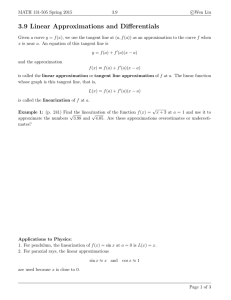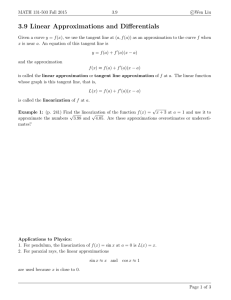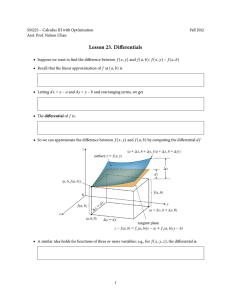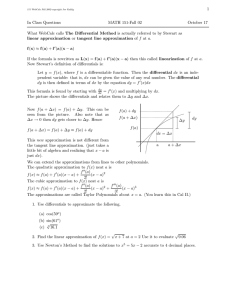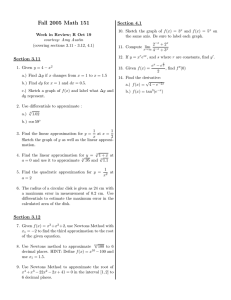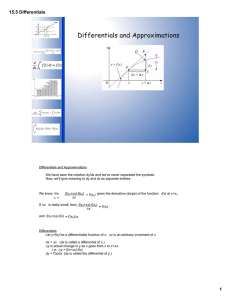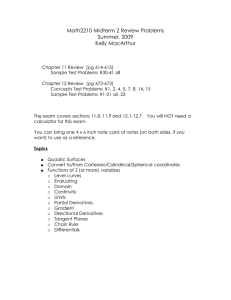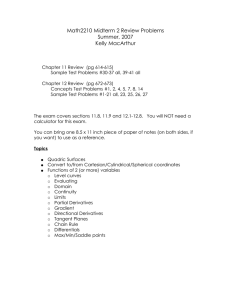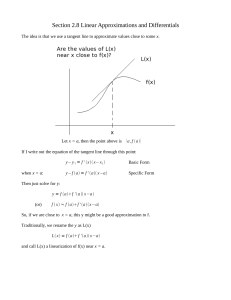Math 1210-001 Monday Feb 22 WEB L112 2.9 Differentials and tangent line approximation
advertisement
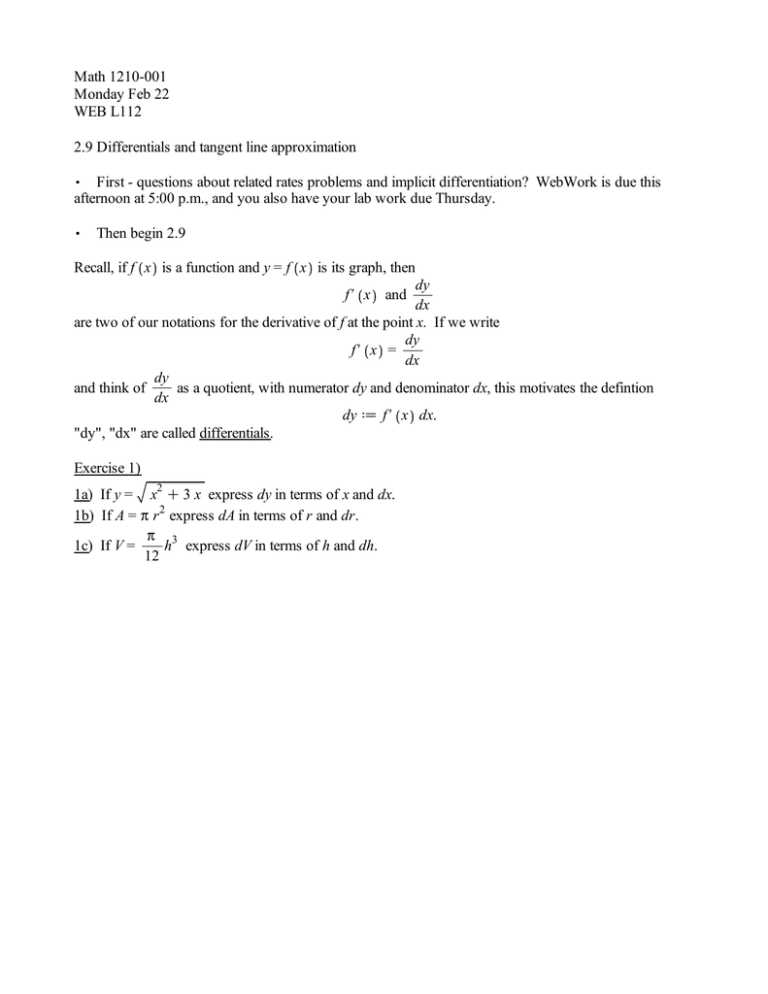
Math 1210-001 Monday Feb 22 WEB L112 2.9 Differentials and tangent line approximation , First - questions about related rates problems and implicit differentiation? WebWork is due this afternoon at 5:00 p.m., and you also have your lab work due Thursday. , Then begin 2.9 Recall, if f x is a function and y = f x is its graph, then dy f# x and dx are two of our notations for the derivative of f at the point x. If we write dy f# x = dx dy and think of as a quotient, with numerator dy and denominator dx, this motivates the defintion dx dy d f# x dx. "dy", "dx" are called differentials. Exercise 1) 1a) If y = x2 C 3 x express dy in terms of x and dx. 1b) If A = p r2 express dA in terms of r and dr. p 3 1c) If V = h express dV in terms of h and dh. 12 What good are differentials? Answer: In sections 3.8, 4.4 we will see how differentials guide us in using the chain rule in reverse, for the processeses of antidifferentiation and integration. In the current section we see how differentials can be used for approximation and error analysis. Here is a diagram which explains how differentials allow one to approximate function values f x C Dx in terms of f x , f# x , Dx. This "differential approximation" is also called "tangent line approximation." In the figure below, we fix "x" and think of "Dx" as varying. , , , "x" is fixed. Consider varying small deviations "Dx" for the input variable. Dy = f x C Dx K f x is the corresponding change in the output variable, i.e. f x C Dx = f x C Dy. Set dx = Dx, dy = f# x dx. Then dy is an approximation to the exact change Dy, that we get by using the tangent line at x, f x approximate the actual graph of f (for small input deviations). f x C dx z f x C dy. to Exercise 2) Consider y = x . Use differentials and approximate 2a) 4.2 (x = 4, dx = 0.2 (the decimal value is 2b) 4.2 = 2.04939 ... ) 8.7 (the decimal value is 8.7 = 2.949576 ... ) Exercise 3) Use differentials to estimate the volume of paint necessary to paint a hemisphere of radius 5 feet, with a layer of paint 0.05 inches thick. Express your answer in gallons. (Hint: 1 ft3 = 123 in3 ; 7.481 gal = 1 ft3 .) Compare your estimate to the exact value. Exercise 4) The side lengths of a cube are measured to be 10 cm G 0.1 cm. Use differentials to estimate how close the volume is to 103 cm3 . Compare to exact error estimate.
